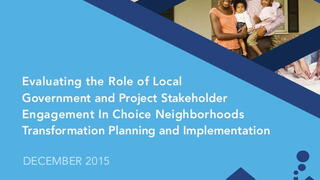
Report of a three-year study of three cities that received funding from the U.S. Department of Housing and Urban Development's Choice Neighborhoods Program.
Retired City Manager Arthur Pizzano, Fairfield, OH, placed consistent emphasis on meeting the needs of residents and supporting local businesses, while building a strong sense of community. His customer-centric approach yielded measurable results.
Calls to 9-1-1 by Upper Arlington, OH, residents were not always emergencies, and many came from the elderly, who made up a third of the city's population. These calls placed a burden on the city's fire and EMS services and personnel. Elderly residents in Upper Arlington now have a valuable resource to get the help they need in non-emergency situations freeing the city's emergency medical services to handle emergencies.
A community came together to solve its problems with one project.
Situated on the Cedar River, Charles City experienced record flooding in 1999 and 2008. Something needed to be done with the space along the damaged riverfront and something had to be done to prevent future flooding. The city responded with an innovative project to build a new riverfront park with a kayak course.
According to a new report released by the Department of Energy, changes in climate create diverse challenges across the U.S. energy system. The report examines current and potential future impacts of a changing climate and extreme weather on the energy sector at the regional level. An overview of environmental conditions are provided for 9 regions covering the continental U.S. plus Alaska, Hawaii and Puerto Rico.
In 2009, the city of Beverly Hills embarked on a strategic effort to strengthen its economic base by developing a five-year Economic Sustainability Plan.
